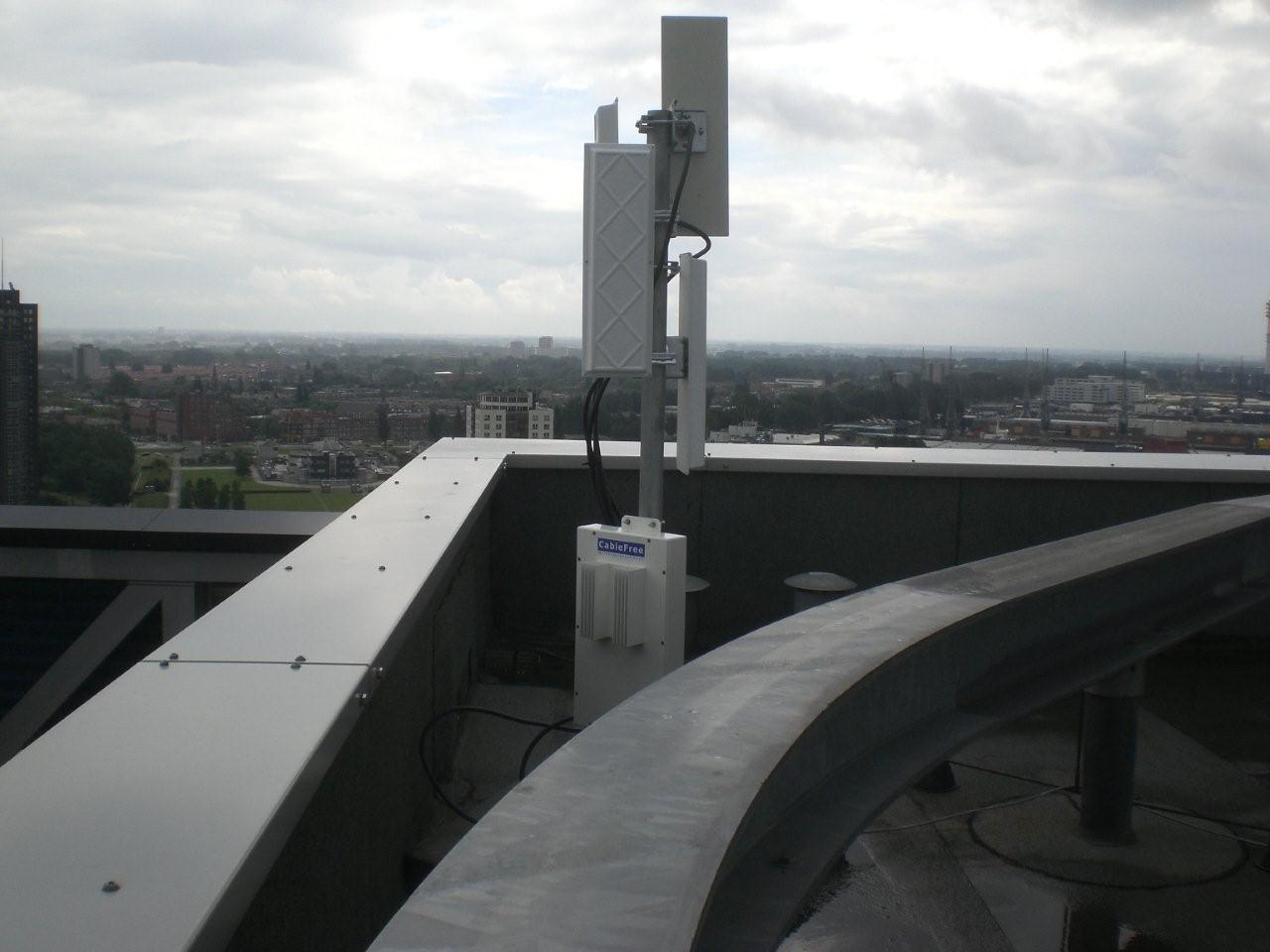Point-to-multipoint Communication on:
[Wikipedia]
[Google]
[Amazon]
 In
In
 In
In telecommunications
Telecommunication, often used in its plural form or abbreviated as telecom, is the transmission of information over a distance using electronic means, typically through cables, radio waves, or other communication technologies. These means of ...
, point-to-multipoint communication (P2MP, PTMP or PMP) is communication
Communication is commonly defined as the transmission of information. Its precise definition is disputed and there are disagreements about whether Intention, unintentional or failed transmissions are included and whether communication not onl ...
which is accomplished via a distinct type of one-to-many connection, providing multiple paths from a single location to multiple locations.
Point-to-multipoint telecommunications is typically used in wireless Internet and IP telephony via gigahertz
The hertz (symbol: Hz) is the unit of frequency in the International System of Units (SI), often described as being equivalent to one event (or cycle) per second. The hertz is an SI derived unit whose formal expression in terms of SI base un ...
radio frequencies. P2MP systems have been designed with and without a return channel from the multiple receivers. A central antenna or antenna array
An antenna array (or array antenna) is a set of multiple connected antenna (radio), antennas which work together as a single antenna, to transmit or receive radio waves. The individual antennas (called ''elements'') are usually connected to a s ...
broadcasts to several receiving antennas and the system uses a form of time-division multiplexing to allow for the return channel traffic.
Modern point-to-multipoint links
In contemporary usage, the term point-to-multipoint wireless communications relates to fixed wireless data communications for Internet or voice over IP viaradio
Radio is the technology of communicating using radio waves. Radio waves are electromagnetic waves of frequency between 3 hertz (Hz) and 300 gigahertz (GHz). They are generated by an electronic device called a transmitter connec ...
or microwave
Microwave is a form of electromagnetic radiation with wavelengths shorter than other radio waves but longer than infrared waves. Its wavelength ranges from about one meter to one millimeter, corresponding to frequency, frequencies between 300&n ...
frequencies in the gigahertz range.
Point-to-multipoint is the most popular approach for wireless communications that have a large number of nodes, end destinations or end users. Point to Multipoint generally assumes there is a central base station
Base station (or base radio station, BS) is – according to the International Telecommunication Union's (ITU) Radio Regulations (RR) – a " land station in the land mobile service."
A base station is called '' node B'' in 3G, '' eNB'' in L ...
to which remote ''subscriber units'' or customer premises equipment (CPE) (a term that was originally used in the wired telephone industry) are connected over the wireless medium. Connections between the ''base station'' and ''subscriber units'' can be either line-of-sight or, for lower-frequency radio systems, non-line-of-sight where link budgets permit. Generally, lower frequencies can offer non-line-of-sight connections. Various software planning tools can be used to determine feasibility of potential connections using topographic data as well as link budget simulation. Often the point to multipoint links are installed to reduce the cost of infrastructure and increase the number of CPE's and connectivity.
Point-to-multipoint wireless networks employing directional antennas are affected by the hidden node problem
In wireless networking, the hidden node problem or hidden terminal problem occurs when a Node (networking), node can communicate with a wireless access point (AP), but cannot directly communicate with other nodes that are communicating with that ...
(also called hidden terminal) in case they employ a CSMA/CA
Carrier-sense multiple access with collision avoidance (CSMA/CA) in computer networking, is a link layer multiple access method in which carrier sensing is used. Under CSMA/CA, nodes attempt to avoid collisions by beginning transmission only af ...
medium access control protocol. The negative impact of the hidden node problem can be mitigated using a time-division multiple access (TDMA) based protocol or a polling protocol rather than the CSMA/CA protocol.
The telecommunications
Telecommunication, often used in its plural form or abbreviated as telecom, is the transmission of information over a distance using electronic means, typically through cables, radio waves, or other communication technologies. These means of ...
signal in a point-to-multipoint system is typically bi-directional, TDMA or channelized. Systems using frequency-division duplexing (FDD) offer full-duplex connections between base station and remote sites, and time-division duplex (TDD) systems offer half-duplex connections.
Point-to-multipoint systems can be implemented in licensed, semi-licensed or unlicensed frequency bands depending on the specific application. point-to-point and point-to-multipoint links are very popular in the wireless industry and when paired with other high-capacity wireless links or technologies such as free space optics (FSO) can be referred to as backhaul.
The base station may have a single omnidirectional antenna or multiple sector antennas, the latter of which allowing greater range and capacity.
See also
*Broadcasting (networking)
In computer networking, telecommunication and information theory, broadcasting is a method of transferring a message to all recipients simultaneously. Broadcasting can be performed as a high-level operation in a program, for example, broadcast ...
* Local Multipoint Distribution Service
* Multichannel Multipoint Distribution Service
* Wireless access point
References